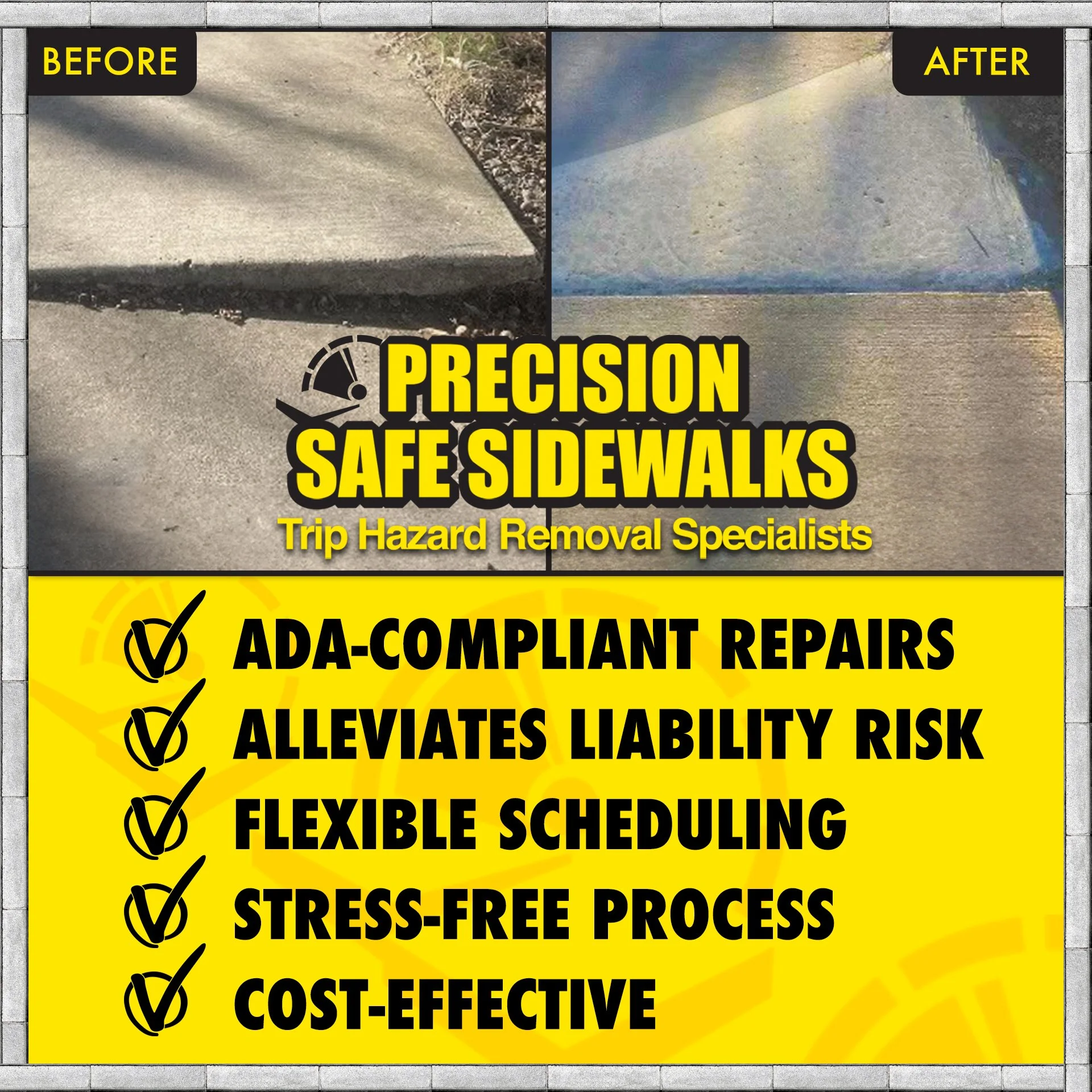Ensuring that sidewalks are safe and accessible is a crucial responsibility for any community. The Americans with Disabilities Act (ADA) sets the standards for accessibility, making it imperative for municipalities, businesses, and property managers to understand what ADA compliance means for their sidewalks and broader community.
Understanding ADA Compliance
The ADA, enacted in 1990, is a landmark civil rights law that prohibits discrimination against individuals with disabilities. It sets forth requirements to ensure public spaces, including sidewalks, are accessible to everyone. ADA compliance for sidewalks means adhering to specific guidelines designed to prevent trip hazards and ensure a smooth, navigable path for individuals using wheelchairs, canes, walkers, or other mobility aids.
According to the ADA, a trip hazard is defined as any vertical change of over 1/4 inch at any joint or crack in a sidewalk. Addressing these trip hazards is essential for maintaining safe and accessible pathways for all community members.
Why ADA Compliance Matters
Safety and Accessibility
Ensuring sidewalks are free from trip hazards reduces the risk of injuries. Cracks, uneven surfaces, and other obstacles can cause falls, especially for elderly individuals and those with mobility impairments. By adhering to ADA standards, communities can significantly enhance the safety and accessibility of their public spaces.
Legal and Financial Implications
Non-compliance with ADA standards can result in legal consequences and significant financial penalties. Lawsuits related to trip and fall incidents can be costly, both in terms of settlements and damage to a community’s reputation. Proactively addressing sidewalk hazards can help mitigate these risks.
Community Inclusivity
ADA compliance promotes inclusivity, ensuring that all individuals, regardless of their physical abilities, can navigate public spaces comfortably and safely. This fosters a sense of community and equal access, enhancing the overall quality of life for all residents and users of your space.
Steps to Achieving ADA Standards for Sidewalks
Regular Inspections
Conduct regular, at least annual, inspections of sidewalks to identify potential trip hazards. Early detection allows for timely repairs, preventing minor issues from becoming major problems.
Effective Repairs
Employ effective repair methods to address trip hazards. Precision Safe Sidewalks uses a process that eliminates trip hazards with extreme precision, ensuring a smooth and uniform surface. This method is not only cost-effective and fast but also minimizes disruption to the community.
Public Awareness and Education
Educate the community about the importance of ADA compliance. Encourage residents and business owners to report sidewalk issues and participate in maintaining safe and accessible public spaces.
The Role of Precision Safe Sidewalks
At Precision Safe Sidewalks, we are dedicated to helping communities maintain safe and accessible sidewalks by repairing trip hazards fast. Our process is designed to be efficient, cost-effective, and minimally disruptive, making it an ideal solution for communities looking to enhance their sidewalk infrastructure.
Conclusion
ADA compliance for sidewalks is essential for the safety, accessibility, and inclusivity of any community. By understanding the importance of adhering to ADA standards and taking proactive steps to maintain and repair sidewalks, communities can reduce legal risks, enhance public safety, and promote equality.
For more information on how Precision Safe Sidewalks can assist in maintaining ADA standards for your sidewalks, contact us today. Let us help you create a safer and more accessible environment for everyone in your community.

